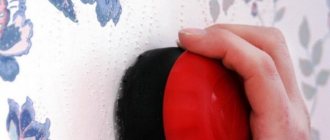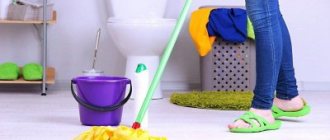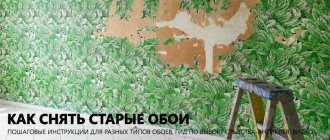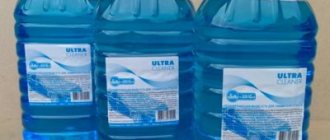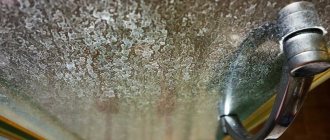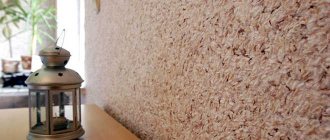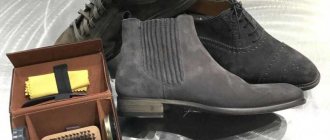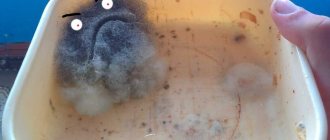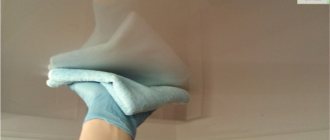Non-woven wallpaper: what is it?
Structural non-woven wallpaper is made from an analogue of cellulose, a material very similar to paper. Industry adds various substances to this material, after which the modified fiber acquires new qualities, including environmental friendliness.
Unlike paper wallpaper, embossed non-woven wallpaper is made using a different method - hot stamping. This method is labor-intensive, but the complexity of the production process is easily compensated by the strength and durability of the resulting product. In some cases, they are even called anti-vandal hot stamping wallpaper.
Characteristics, types and composition
Depending on the key characteristics and main purpose, the following types of non-woven wallpaper are distinguished:
- Wallpaper made entirely of non-woven fabric. The composition of non-woven wallpaper is almost completely devoid of cellulose, sometimes it is present in very minimal quantities. This material is the most common on the market.
- Wallpaper, the reverse side of which is made of non-woven fabric. The outer material can vary, but most often it is vinyl. It is quite resistant to any type of impact, but still such hot-stamped wallpaper is not recommended for use in the hallway or kitchen, given its disadvantages. The combination of a practical and easy-to-stick non-woven side and a practical vinyl side makes this type of wallpaper one of the most popular. You can also find paper wallpaper on a non-woven basis on sale.
- Paintable wallpaper made entirely of non-woven fabric. Multiple color changes while fully maintaining decorative qualities. An important advantage is the low price. White non-woven wallpaper is designed for those who like to change their environment often. Painting wallpaper is a wonderful way to change the interior.
To avoid being deceived by the seller and not to buy paper wallpaper at the price of non-woven wallpaper, you need to make a small tear along the edge. Paper wallpaper with a non-woven backing will have unevenness.
Varieties
- Non-woven. They wash well, are available for painting, single-layer and double-layer (how to glue non-woven wallpaper?).
- Paper. Made from varnish coated paper.
- Vinyl. Durable, do not fade, do not absorb dust, tolerate humidity and frequent cleaning (you can find out about the features of gluing vinyl wallpaper here).
- Acrylic. Paper wallpaper coated with acrylic polymers.
- Glass wallpaper. Waterproof, hypoallergenic, vapor permeable, environmentally friendly and scratch resistant.
- Liquid wallpaper. They resemble decorative plaster, when dry they are diluted with water and applied to the wall, after drying they are covered with acrylic (read more about what liquid wallpaper is and how to apply the mixture to the surface).
- Metal. They do not allow air to pass through and are amenable to any type of cleaning.
After gluing thick wallpaper, you need to provide additional ventilation in the room, since the coating does not allow the walls to “breathe” (how to glue wallpaper correctly?).
Advantages and disadvantages
Such wallpaper is relatively new on the market, but this time was enough to appreciate all the advantages of non-woven wallpaper:
- maintaining dimensions after drying;
- increased density of the canvas, allowing you to hide cracks and unevenness on the wall;
- resistance to fire, smoldering and high temperatures;
- oxygen transmission;
- water resistance;
- maintainability;
- possibility of painting.
Separately, it should be noted such features of non-woven wallpaper as ease of gluing and leveling. When using non-woven wallpaper, glue must be applied only to the wall. This helps preserve the quality of the flooring, time and effort spent on repairs. Wallpaper can also be removed easily. Before removing non-woven wallpaper, you do not need to carry out any preparatory measures.
Non-woven wallpaper also has disadvantages:
- low resistance to dirt due to the porous structure and ability to collect dust;
- high cost relative to other types of wallpaper.
It is worth noting that these disadvantages are very insignificant relative to the advantages, which makes any non-woven wallpaper the most popular material for interior decoration. And if you know how to glue meter-long non-woven wallpaper, then soon the room will sparkle with new colors.
Advantages
Like other varieties, non-woven wallpaper has its advantages and disadvantages. There are a huge number of factors in favor of such a purchase. Let's look at the main ones:
- material density that will provide good protection;
- fire resistance;
- fairly easy gluing due to the large size of the roll;
- possibility of painting the coating in the future;
- environmental friendliness, which is especially important for allergy sufferers;
- durability.
How to choose the right non-woven wallpaper - the main characteristics can be found in the following video:
You can even glue such wallpaper on walls that have minor defects. Indeed, due to their density and size, they can easily hide cracks and irregularities. This will save a lot of time and effort that you would have spent on pre-treatment of the surface.
Due to the fact that the glue only needs to be applied to the wall, there is no need to free up space to apply the glue to the canvas. And thanks to the large width of the roll, after gluing, the number of joints will be reduced to a minimum, and the process itself will go much faster.
The wallpaper itself does not get wet from the adhesive solution and does not stretch. If the strip is glued correctly, no bubbles or blisters will form. Working with such a coating is a pleasure. They can be glued to both walls and ceilings. Removing the old finish is quite simple; you don’t even have to pre-wet the surface. And in addition to the above, such wallpaper is very easy to clean from dirt, which will be a big advantage for finishing the kitchen.
Non-woven backing for wallpaper
In addition to decorative material, substrates are made from non-woven fabric. Intended for wallpaper stickers, they have the following purpose:
- sound and heat insulation;
- leveling the wall;
- extending the service life of wallpaper;
- improving the environmental characteristics of the material;
- increasing the strength of wall coverings.
A non-woven backing can replace a layer of putty, reinforcing microscopic cracks, hiding the disadvantages of the wall and leveling its surface. A high degree of elasticity, density and integrity make it possible to strengthen the sound insulation and noise insulation system of the room and extend the service life of the wallpaper.
The non-woven gray backing is very resistant to water and moisture. At the same time, it is vapor permeable. When the humidity in the room fluctuates, wallpaper glued to such a substrate retains its original dimensions. Continuous air exchange prevents mold from forming on the wall surface. And of course, such a base for wallpaper adheres perfectly to a wall that has been previously coated with adhesive.
After gluing the non-woven backing, you need to let it dry. This process will take about a day. Only after this can you start gluing gray or colored wallpaper. Beige non-woven wallpaper on a backing will not show through, the result will be magnificent.
Possible solutions
How to prevent show-through?
If you plan to do the repairs yourself, then it is easier to prevent the problem than to eliminate its consequences. Fortunately, there is nothing impossible about this:
The contrasting pattern together with the high density of the base is sufficient insurance against stains.
- We choose the material correctly. You need to initially assess the condition of all surfaces and think about which wallpapers will not show through the walls. Sometimes it’s easier to adjust the color scheme than to spend large sums on putting the walls in order.
- We do not skimp on the adhesive composition. Glue stains very often appear under the finish, so you need to choose high-quality materials that do not leave streaks after polymerization.
The glue stains look something like this photo.
The probability of problems with finishing such a wall is close to 100%
- We prepare the surface with high quality. This recommendation should not be neglected in any case, but if we are gluing light-colored wallpaper, then the quality of preparation comes first. Here it is important not only to level the wall, but also to give it the most uniform color possible. This task can be quite labor-intensive, especially in the case of plasterboard surfaces, on which areas of putty on joints and screw heads can be visible.
Contrasting areas on the putty surface may be visible even after finishing.
If we spend time and money on putty, we will save ourselves from worries in the future.
- We paint/prime the walls to match light wallpaper. An alternative to puttying the entire surface can be painting or primer. A white pigment with good coverage helps in the vast majority of cases.
A high-quality monochromatic primer can solve a lot of problems.
For painting, choose a composition with good adhesion. The fact is that the paint, which will weakly adhere to the base, risks peeling off when adjusting the position of the just pasted roll.
The higher the hiding power of the material used for preparation, the better the camouflage.
- We use a substrate. Rolled materials, which are glued to the wall before final finishing, are mainly intended for leveling and thermal insulation. But in our case they will help too.
This backing is a great solution!
Yes, the preparatory work is often very labor-intensive, and materials for leveling and painting are expensive. But in any case, their price will be lower than the price of the wallpaper needed for plywood - so there’s no point in saving here.
How to fix the situation?
If the problem with stains or marks showing through appeared after the sticker was applied, then the chances of a successful solution are much less.
The instructions in this case will be as follows:
Once we have pasted it, we wait until the wall dries and don’t panic ahead of time!
- If stains appear immediately after the wallpaper has been pasted, it makes sense to wait for the glue to dry completely (about a day, rarely more). The thing is that when the paper or non-woven fabric is moistened, the transparency of the base increases, and when it dries it returns to normal. So there is still a chance that the stains will not be visible.
The more thoroughly we level the material, the better!
- If thin non-woven trellises for painting were used for finishing, wait for them to dry and paint them. Naturally, if the stains appear quite brightly, then it is worth choosing a material with good hiding power (even if we have to make changes to the design).
We finish the material to be painted with a composition with good hiding power - this way the stains will be masked
- Well, if nothing helps, well, you’ll have to redo everything. We remove the wallpaper, prepare the wall (putty, prime, paint), and only after that we paste the surfaces again. Of course, the choice of material can also be adjusted by purchasing trellises with a darker color or contrasting pattern.
If the problem is very serious, you will have to redo everything!
Is it possible to wash non-woven wallpaper?
As already mentioned, one of the obvious advantages of non-woven wallpaper is its resistance to moisture, so they can certainly be washed, while following certain rules. Before removing non-woven wallpaper that is heavily soiled, you can try washing it. Before cleaning, pay attention to the markings.
If non-woven wallpaper for the living room was purchased a long time ago and the label has not been preserved, you should try to wash the wallpaper in an area that is not in the direct line of sight. Before washing off the dirt, a piece of washable wallpaper needs to be wetted and allowed to dry. If after drying there are no changes in the structure of the material and the color scheme of the pattern, then the hot-stamped wallpaper can be wetted. Then you need to carry out similar actions using different types of detergents. Wash off the dirt thoroughly but gently.
The question of how to clean washable non-woven wallpaper is also relevant. Choosing a detergent is a responsible matter. It should be noted that choosing the right product is very easy, because non-woven wallpaper for the hall is quite durable and resistant to external influences. Such well-known solutions as a mixture of laundry or toilet soap with water, dishwashing liquid or a solution of soda and water are not only perfect for washing, but will also cope with the task at hand.
If you managed to save the wallpaper label, then you need to pay attention to the marking. So, if one wave is depicted, then they can be wiped with a damp cloth. Using too much moisture will ruin plain wallpaper. Water can be used if the list of markers shows two or three waves. If you find a ridge pattern on the label, non-woven wallpaper can be cleaned with a soft brush, because it is washable.
After washing non-woven wallpaper, you must wipe it thoroughly with a dry cloth. The more the material absorbs, the better. Under no circumstances should you use a hairdryer to dry glued wallpaper; this can ruin it, exacerbating the imperfections of the coating.
Cleaning methods
So how to remove stains on wallpaper? I'll tell you how to restore non-woven, vinyl and paper trellises to their original appearance.
The cleaning method directly depends on the base material of the wallpaper.
6 methods for non-woven and vinyl products
As I said earlier, removing grease stains from non-woven or vinyl-based wallpaper is much easier than from paper products.
There are several effective methods:
Illustration Instructions
Method 1. Soap solution Dilute a small amount of soap in warm water. Moisten a soft sponge in the resulting solution and gently treat the contaminated area with it. Then you just have to wait for the material to dry.
Method 2. Starch Regular starch will help remove grease from wallpaper. Dilute it with water to the consistency of thick porridge. Apply the mixture to the stain and leave it on for 24 hours. After the specified time has passed, simply remove the remaining mixture with a dry cloth.
Method 3. Soda Another remedy that answers the question of how to remove greasy stains from wallpaper. Mix one part baking soda with three parts water. Apply the composition to a soft cloth and wipe the dirt with it until it completely disappears. Remove any remaining product with a clean cloth.
Method 4. Chalk Another available component for removing stains. Grind the chalk to a powder and lubricate the problem area. Give the chalk time to absorb all the dirt, and then simply wipe it off with a dry paper towel.
Method 5. Gasoline Gasoline is the answer to the question not only of how to get rid of greasy stains, but also how to remove paint from wallpaper
But keep in mind that it must be used extremely carefully so as not to damage the material. Soak a napkin in gasoline and apply it to the stain for 10, maximum 15 minutes.
Method 6. Toilet paper You can remove dirt from the surface using regular toilet paper
Apply it to the damaged material and iron it on top, the paper will absorb the fat. This option is quite effective when there is a fresh stain on vinyl wallpaper, and its price is simply ridiculous.
3 ways for paper products
We just have to figure out how to clean paper wallpaper without damaging its delicate structure?
I offer you three proven options:
| Illustration | Instructions |
| Method 1. White bread This option will only work effectively on fresh grease stains. Place a dirt-sized piece of white bread against the wall and wait until the crumb absorbs any remaining fat. | |
| Method 2. Paper napkin and iron Since you can't use detergent on a paper surface, try using a paper towel. Apply it to the dirt and work it over with a hot iron. If necessary, repeat the procedure, replacing the used napkin with a clean one. | |
| Method 3. Stationery eraser Another option that you can easily implement with your own hands. Gently rub the stained area with the eraser, but do not apply much force - you risk damaging the material. |
How to wash paper wallpaper from dirt
Paper cannot be washed, it will quickly become unusable, so paper wallpaper can only be wiped with a damp cloth, without applying too much pressure on the material. If wet cleaning does not remove dirt from them, it is better to replace the coating with a new one. There is no other way, because once upon a time when finishing you chose the cheapest option.
The so-called textile wallpaper is usually classified as this type. It is better to clean them with a regular vacuum cleaner.
The only exception is paper wallpaper with a special moisture-resistant coating. But even with moisture resistance, you should be wary of wet tears. Be careful. Washing paper wallpaper should be done carefully.
Which wallpapers are washable?
First of all, in order to avoid unpleasant situations and not spoil the coating, let's figure out what wallpaper can be washed. I think everyone understands that paper wallpaper cannot be washed.
Vinyl and non-woven wallpaper are called washable. However, not everyone knows that these fabrics may have different resistance to moisture and cleaning agents. Therefore, manufacturers inform customers about this characteristic of the material using special designations that are applied to the wallpaper packaging:
Designation Features of the canvas One wave This wallpaper is moisture resistant, but not washable. Therefore, they can only be wiped with a damp cloth, doing this very carefully. In this case, no cleaning agents should be used. Two waves Cloths of this type are washable, i.e. they can be washed with soapy water
However, this must be done very carefully. Three waves Linens with this designation are called super washable. They are resistant to water and can be washed using any household detergent. Wave with a crest Such fabrics are resistant not only to moisture, but also to friction
Thanks to this, they can be washed using a brush. It is also allowed to clean them with a washing vacuum cleaner. The price of these canvases is the highest, but in some cases their use is quite justified, for example, they are an excellent choice for the work area in the kitchen, as well as for children's rooms.
Washing technology
Plain wallpaper can be washed by sprinkling it with water and wiping it with a cloth.
Non-woven wallpaper is divided into several types: plain, patterned, painted. Therefore, the washing rules will also be different.
You can wash plain wallpaper with a soft cloth soaked in soapy water. The coating should be sprayed with water, dust collected with a rag and wiped with a dry cloth.
Non-woven fabric with embossing and patterns can be washed as follows:
- Use a vacuum cleaner to remove dust from the coating.
- Add a few drops of dishwashing detergent or washing powder to the water.
- Wipe the canvas with a soft sponge dipped in soapy water so that no streaks remain.
- Use a dry cloth to remove moisture.
Old trim should be vacuumed at low power to prevent the sheets from peeling off.
You can wash wallpaper for painting in the same way as a surface with a pattern. If water-based paint was used, they should be cleaned with a cloth slightly moistened with water. It will remove dirt without damaging the color layer. If the canvases are painted with acrylic or latex, they should be washed with water and detergents that do not contain abrasives.
Non-woven wallpaper dries quickly. In most cases, 1 hour is enough for this. Do not allow drafts during wet cleaning or when drying canvases. They can cause the coating to peel off. Also, you should not speed up drying using artificial heat, which can cause the wallpaper paste to dry out and the interlining to fall off.
Fabrics that easily tolerate moisture can be cleaned with a steam cleaner.
Washing features
First of all, the finishing surface is prepared for washing. Use a vacuum cleaner or dry cloth to remove dust deposits. With old decoration, the power of the vacuum cleaner should be medium, otherwise the linens will come off the walls.
It is recommended to prepare cleaning products in advance. It is better to use a washcloth to wipe wallpaper. Next, dilute the cleaning agent in warm water and apply this solution to the canvas, distributing the product over the entire surface. Actions must be quick and uniform to avoid the formation of drips.
Tip: Overly contaminated areas are treated separately after general cleaning.
At the end of the procedure, you need to wipe the walls with a clean, dry towel. Washing wallpaper dries within one hour, but creating a draft is not recommended, as this can ruin the canvases - they will simply move away from the walls. You should also not use an artificial heat source for quick drying. This will contribute to the overdrying of the wallpaper, as a result of which it will dry out, causing the pattern to lose its original appearance, or even peel off.
If vinyl wallpaper on a non-woven backing is used as finishing, then before washing it, it is worth studying the table with instructions indicated on the roll. Considering the percentage of moisture resistance of the material, it can be wiped with a damp cloth or thoroughly washed with a cleaning solution.
How to clean non-woven wallpaper
Non-woven wallpaper can be washed with any cleaning products. This could be dishwashing detergent, washing powder, liquid soap. LOC , which is produced by Amway, will help clean canvases from dirt and dust Will remove the fungus Whiteness or Anti-mold . HG will cope well with heavy stains .
Washing vinyl wallpaper should begin after determining the type of finish. If it is compact vinyl, you can clean them with soapy foam and a brush. It is better to rub the surface in a circular motion without pressing. If the vinyl is foam backed, only wash it with a soft cloth or sponge dampened with an all-purpose cleaner.
The surface of non-woven rolls is water-repellent, so it can be wet. After wet cleaning, wipe the canvas with a dry soft cloth.
Methods for washing wallpaper
Surfaces are washed in various ways. The option for getting rid of dirt directly depends on the type, structure of the wallpaper, and the dirt itself.
From pollution
The wallpaper is first cleaned from dirt and dust with a vacuum cleaner or a dry soft brush. Stubborn dirt is then removed using a wet method.
The easiest way to remove dirt is from washable wallpaper. To clean them, use a soda solution, which is prepared as follows:
- Pour soda into a wide shallow container, add water, stir vigorously.
- Apply to stain.
- After drying, clean with a dry cloth.
Clean paper products with a dry brush or soft, clean broom. They cannot be treated with water. To clean, it is better to use baby powder sprinkled on the dirt. After a few minutes of exposure, everything is removed with a brush. You may need to do the procedure several times.
If fingerprints appear on the wallpaper, you can use an eraser; it will not leave any trace of them. Just don’t rub the dirt very intensely.
From fat and plaque
Dirty, greasy stains can simply be removed with an iron. This option is suitable for any surface. The main thing is not to overdo it without spoiling the surface. You need to prepare a pack of paper napkins, as well as an iron without steam. The cleaning process is simple.
- The napkin is applied to the contaminated area and ironed with a warm device.
- As soon as the fat appears on the fabric, it is replaced with a new one. And so on until the wall is clean.
Traditional methods for eliminating pollution
Use the available products to help wash off dust, remove grease and other stains from wallpaper at home.
Cleaning from dirt
You can wash the wallpaper with soapy water. To do this, add grated laundry soap or a few drops of detergent to the water. Use a soft sponge soaked in the mixture to rinse the contaminated surface and wipe with a slightly damp cloth.
Fat removal
There are several ways to remove oil deposits from the coating:
- Lemon acid . Add 75 g of acid to 250 ml of warm water. Use a soft sponge soaked in the resulting product to treat the stain. After 5 minutes, rub, then rinse with a wet cloth.
- Dish gel . Add a couple of drops of dishwashing detergent to a liter of water. Clean the stain with soapy water and leave for 5-10 minutes. Wipe off with a damp sponge.
- Bread . To remove fat, you can treat the dirty area with bread crumb.
- Soda . A solution of this powder will clean any residue from wallpaper in the kitchen. Dilute 20 g of soda in a liter of water. Rinse the fabric.
- Talc . Fat can be removed with baby talcum powder. Apply the product to the stain for 10 minutes, then wipe with a sponge.
Pen marks
You need to wash the ink with a solution of 70% acetic acid and potassium permanganate. Apply the product onto the canvas with point movements and leave for 15 minutes. Remove the pink stain that formed at the site of the pen marks with a cotton swab soaked in peroxide.
You can remove ink in this way: moisten a sponge with alcohol and rub the stain until it disappears.
How to care for wallpaper
Proper care of wallpaper extends its service life. Regularly clean the surfaces from dust with a dry sponge; if necessary, use a slightly damp cloth. If severe contamination appears, try to remove it immediately, otherwise the dirt will become embedded. Do not use strong chemicals or hard-bristled brushes; open windows after wet cleaning.
Over time, stains of various origins appear on the wallpaper, which are difficult to clean. But modern chemicals and home remedies can help eliminate the stains.
Can non-woven wallpaper be washed?
Is it allowed to wash non-woven wallpaper? This question arises for everyone who has just decided to use this finishing material. It’s worth pointing out right away that non-woven wallpaper can be washed, which cannot be said about paper sheets, from which light stains can be removed only with a dry cloth and an eraser. Non-woven wallpaper can not only be washed, but also vacuumed, removing accumulated dust.
Various cleaning compounds can be used for washing. However, they must be non-specialized. These are ordinary products that you use every day. Non-woven wallpaper has a water-repellent surface, that is, it is not afraid of moisture. Feel free to start cleaning after you have stocked up with the necessary equipment. Upon completion of washing, wipe the surface with a soft cloth.
Household chemicals can be used to wash wallpaper
The drying time of the finishing material depends on the area that has been wet cleaned. Since the surface of the wallpaper is water-repellent, water does not penetrate deeper than the decorative layer. The linens dry very quickly; no sooner have you started washing them than they are already dry. For this, no more than 1 hour is enough. To remove dust from the surface of non-woven wallpaper, you can use regular napkins.
Non-woven wallpaper for applying paint is the most practical option. The type of cleaning agent depends on the quality of the paint used to finish the surface.
If you used water-based paint for painting, then the best option for cleaning the wallpaper would be a regular napkin slightly moistened with water. It will allow you to quickly remove stains without damaging the outer layer. If the canvases are coated with a water-dispersed, latex or acrylic paint composition, then the wallpaper can be washed with ordinary warm water using non-abrasive detergents.
Using paintable wallpaper in the living room
The presented recommendations allowed you to understand that it is possible to wash non-woven wallpaper. But for this you need to follow a number of simple but important rules. All work must be done carefully. Make sure that the surface is not damaged. In addition, it is important to take into account the type of canvas used - painted, vinyl on a non-woven basis, for painting.
What can't you do?
Non-woven wallpaper is resistant to various influences. They are not afraid of moisture in small quantities, bright light and temperature changes.
However, you should not subject the wallpaper to serious tests, for example:
- Moisten generously.
- Rub.
- Clean with a hard sponge.
- Clean with abrasive substances.
Otherwise, the canvas will fade or become deformed.
You will find many useful tips and recommendations on removing pen ink from various surfaces and objects here.
Positive and negative qualities
Most often, non-woven wallpaper for painting is used for interior decoration. They have a textured surface that resembles decorative plaster or creates a certain ornament. They are allowed to be repainted more than once, and each time you will update and modify your interior without spending a lot of money. The best option would be to use types of paint such as acrylic, water-based and water-dispersed.
Washable wallpaper in a nursery is a great option
The following advantages of the finishing material are highlighted:
- The gluing process is much simpler than when using paper sheets. The glue must be distributed only on the wall. Non-woven wallpaper does not need to be treated with adhesive.
- The finishing process takes little time.
- If the surface of the walls was poorly prepared, but the glue was applied according to all the rules and instructions, then the initial strength of the canvases on a non-woven basis is higher than on paper.
- Non-woven washable wallpaper can be used for gluing surfaces that have minor defects.
Washable non-woven wallpaper is not without negative characteristics. These include:
- Despite the fact that the canvases are very dense, without preliminary impregnation with glue they are not plastic and will not stretch. Therefore, it is not worth covering large defects on the wall with them. The finishing material will not stick tightly to the wall and will need to be cut.
- Non-woven fabric is a material that transmits light. Therefore, you can glue this washable wallpaper only on a surface with a neutral color. The best option would be white walls, otherwise the previous pattern will show through.
Despite the disadvantages presented, washable non-woven wallpaper is much stronger than paper wallpaper. An important fact is that during the production of the material two bases are used: paper and non-woven fabric.
Reason 1: the light-colored fabric is too thin
White wallpaper is suitable for small dark rooms. This is an almost win-win solution that allows you to visually make the room more spacious and comfortable, but... Almost always, such coatings will be translucent, regardless of their composition. In this case, non-woven fabric and paper will behave the same. Vinyl coverings are also no exception.
There are several solutions, depending on the situation:
- If the wall was well prepared, high-quality glue was used, and not even a day has passed since the sticker was applied, the only thing you can do is not to panic. Until the glue dries, the transparency of the wallpaper may be higher, this is natural. Such spots disappear within a day. It’s easy to test the hypothesis: if there is an extra piece of dry canvas left, place it on any surface with a pattern, see if it is visible in a well-lit room. If not, you can relax, 99% that after drying the stains will disappear.
- If the surface was poorly prepared, everything is more complicated. In the case of light-colored canvases, even the builders’ notes with a simple pencil can play a critical role. In this case, it all depends on the type of canvas - if it is non-woven wallpaper for painting, a couple of layers of paint are guaranteed to solve the problem. If the finish is not intended for painting, you will have to re-glue them.
On wallpaper with a pattern, stains are not so noticeable
If the emerging spots are small, there is no point in redoing the entire room; perhaps they can be hidden with appliques or stencils. Just stick the pattern on the problem area and it’s unlikely that anyone will guess that the intricate pattern is needed to hide the defect, and was not originally intended.
If your choice falls on light-colored coatings, then be sure to take care of preparing the walls. It is necessary to level not only their surface, but also their color. You can do this in three ways:
- Putty, thorough cleaning from marks and stains. In this case, the walls still need to be primed, otherwise the canvas may stick worse.
- Dye. Not just any kind, but a special one, for wallpaper. Regular paint may have a negative effect on adhesion.
- Primer with pigment. A sure-fire option that kills two birds with one stone: primer and paint in one bottle.
Of these three options, it is preferable to prime the wall, cover it with a thin layer of putty, and prime it with a primer with a light pigment. Do not neglect the primer at each stage of preparation; it improves adhesion, reduces material consumption, and extends the service life of the entire finish.
Pros and cons of the material
Non-woven wallpaper is intended for wall decoration. Consist of non-woven backing and foam vinyl. Non-woven fabrics have a thin paper base, which is covered with a layer of PVC film on top. The finishing material contained in compact vinyl film is not afraid of moisture and cleaning devices, be it a hard brush or a damp sponge. Foamed vinyl film is resistant to cleaning with a damp cloth soaked in a solution of detergents.
Among the advantages of the material the following are noted:
- recognized as environmentally friendly;
- it has high elasticity and strength;
- has the ability to hide wall defects;
- can be painted;
- affordable price;
- practicality in operation.
Among the shortcomings are noted:
- the high cost of some wallpaper modifications;
- non-woven fabrics without additional composition are very thin, and therefore with the slightest defect they become unusable;
- a thin canvas can show through the previous paint color.
How to wash wallpaper?
If you are going to wash the wall from top to bottom, you also need a stepladder or a construction rod. The algorithm of actions will be as follows:
- Make a solution of detergent (1 teaspoon per liter of water).
- Soak a cloth in the solution and wring it out thoroughly.
- Wipe the wall starting from the top.
- Wipe the wall with a rag.
- Let the wall dry naturally.
Important! You should not dry the wall with a hairdryer or create a draft in the apartment. This will not speed up drying, but will cause trouble.
How to wash non-woven trim?
If you decide to use thin fabrics, it is highly recommended to wash them with a damp cloth. In other cases, only dry cleaning is possible. Vinyl non-woven wallpaper is subject to wet surface cleaning depending on the degree of moisture permeability. Vinyl textiles cannot be washed.
As a solution for washing this type of wallpaper, you can use any cleaning products for plumbing, as well as dishwashing detergent. Non-woven fabrics have a water-repellent property, which allows for complete cleaning with a cleaning solution until contaminated areas are completely eliminated.
Tip: Surface drying time may vary depending on the area to be cleaned.
If there is a question about removing dust from the wallpaper, use a damp cloth. Non-woven wallpaper for painting is the most practical, and how best to wash it will depend on the material of the canvas being coated. If water-based paint was used, the canvas can be wiped with a damp cloth so as not to blur the design. If a water-dispersed, latex or acrylic emulsion was used, the material can be washed with warm water and non-abrasive cleaning powders.
How to proceed?
To avoid streaks, before washing, you should clean the surface of the wallpaper from dust with a dry cloth or vacuum cleaner.
- Paper wallpaper . It is not recommended to wet paper surfaces with water; use dry cleaning only. Old dirt must be carefully cleaned with a brush. Next, use the rough side of a damp sponge to gently brush away any remaining dirt.
- Non-woven wallpaper . Such products are not afraid of thorough cleaning and washing with detergents; all types of dirt can be removed from their surfaces.
- Vinyl wallpapers . Vinyl materials are moisture resistant and can withstand mechanical cleaning using any household chemicals and other available means.
- Washable wallpaper . Cleaned depending on the characteristics indicated on the product label. Wash using foam and a sponge, without using a brush.
- Liquid wallpaper . It is very difficult to remove dirt, dust and other stains from the surface. Dry cleaning with a soft brush or sponge is recommended. If the wallpaper is not varnished, wiping it with a damp cloth is not recommended, so as not to wash off the coating (you can learn about the pros and cons of liquid wallpaper, as well as how to properly apply and care for such a coating here).
Types of stains and their removal
If there are grease stains on the wallpaper, you can remove them with talc. It is diluted with water and applied to the stain with a brush. The second option for cleaning various wallpaper stains is to remove them with an iron. To do this, cover the contaminated area with a paper napkin and heat it with an iron. It is recommended to repeat the procedure several times, changing the napkin for a new one. As a result, the stain transfers to the napkin. The remaining contamination is removed with a detergent composition.
If the stain is on vinyl wallpaper, remove it with dishwashing detergent. If the canvas has been stained with colored pencils, you can remove traces of them with a soft eraser.
Drawings made with a felt-tip pen are difficult to remove; they cannot be removed from paper or silk wallpaper. You can try to remove the felt-tip pen from non-woven wallpaper using water and laundry soap. Alcohol-based markers can be removed with diluted alcohol or citric acid.
Among the common stains remaining on wallpaper are fingerprints from dirty hands. In this case, it is recommended to wash paper wallpaper with improvised means, for example, soaked bread or a stationery eraser. Textured canvases should be washed without pressure and a large amount of liquid; in the worst case, they will crumple and move away from the wall.
Advice: It is important to eliminate more serious contaminants immediately after they appear.
If there are dirty places on the surface of the non-woven finish, they are cleaned by lightly shaking them off with a wet sponge. It is not recommended to smear the cleaner all over the stain.
How to remove dirt from wallpaper
Cleaning wallpaper from dirt is easy if you follow some rules.
- When carrying out repair work, preference is given to good finishing materials. Simple paper materials get dirty faster and it is more difficult to remove traces from them.
- Non-woven and vinyl products with a resistant coating are washed with a damp cloth. They do not absorb dust, dirt, or unpleasant odors; almost any type of contaminant is removed from their surfaces.
- Wallpaper is washed using various methods. Some people use special detergents for these purposes, others use soapy water or traditional methods.
- Be sure to carry out a preliminary test on wallpaper in invisible places: behind the sofa, in the corners. After checking, you need to see if the material is deteriorating from water or the selected product, and then further cleaning is carried out taking into account the result obtained.
To conduct testing, the surface is treated with a damp sponge with the selected product. If after the procedures the materials have not lost their texture, there are no streaks left on them, and they have not lost their rich, bright color when drying, further cleaning can be done. If they are deformed, the surface either cannot be washed, or you should try other detergents.
How to wash wallpaper? Folk remedies
First of all, you need to clean the wallpaper from dust using a vacuum cleaner with a soft brush or dry cloth. If you wash stains on a dusty surface, streaks will form on the walls.
- Soap solution. Vinyl and non-woven materials are washed with a solution using liquid soap or dishwashing detergent. Non-woven products are washed with clean warm water; vinyl products can only be washed with foaming agents. Paper - dry clean only. If the first wet treatment of the walls fails to remove stains and dirt, repeat the procedure after the surface has dried.
- Chlorine-based bleach will help lighten yellow stains and also remove heavy stains on light-colored wallpaper. Dirt must be removed with quick wetting movements so that the material does not become soggy from a large amount of liquid. After washing, carefully wipe the cleaning area with a dry soft cloth to remove excess moisture;
- Melamine sponge. It easily copes with stains on vinyl products, but can harm non-woven and paper products.
- Bread. This option is suitable for inexpensive paper products. Take a piece of soft bread and place it on the surface to be treated for a few minutes. The procedure is repeated several times in a row until the stain completely disappears.
- Gasoline, kerosene, alcohol. These substances remove not only greasy stains, but also paint, primer, and putty. They are used on any surface: paper, vinyl, non-woven.
- A mixture of gasoline and tooth powder will help deal with greasy stains that have formed in kitchens. The product is prepared in the same proportion, then applied to the stain. After drying, remove the residue with a brush.
- Vinyl and non-woven products can be easily cleaned with wet wipes. With this method, it is worth choosing products that do not contain various oils.
- Non-woven products can be cleaned with a mixture of water, soda or starch. The mixture is prepared in a ratio of 1:4 and applied to the stain. After drying, the remaining product is removed with a brush, and the cleaning area is wiped with a damp sponge.
Professional compositions
On the shelves of stores with household chemicals, you will not be able to find products intended specifically for washing wallpaper. Therefore, housewives use the most suitable preparations for these purposes to help cope with any contamination at home.
It is best to use sprays intended for household needs - for cleaning furniture or kitchen surfaces:
- Pronto – removes dust, eliminates allergens, fingerprints, dirt;
- Vanish - foam for carpets, copes well with any dirt;
- Freshbubble – removes grease, plaque, contains soda.
What does the marking on the rolls mean?
The markings indicated on the roll will help you determine which cleaning reagents are allowed to be used, as well as whether the selected wallpaper can be washed.
- One wave - it is permissible to wipe with a damp cloth without using detergents.
- Two waves. Washing fabrics is allowed, but only with a soap solution.
- Three waves. The material can be washed with any cleaning agent. The water should be slightly warm so as not to destroy the structure of the wallpaper.
- Comb . The surface of the material is cleaned using household cleaning devices and a washing vacuum cleaner. Using a regular vacuum cleaner, cleaning is allowed, but without allowing the dust collector close to the wall. The distance between the wallpaper and the vacuum cleaner should be 5 mm.
In conclusion, we can safely say that the washable type of non-woven wallpaper is a modern finishing material that makes it easy to wet clean its surface. This gives a great advantage and long-term operation of the material. It is quite possible to wash non-woven wallpaper, but this should be done without sudden movements or pressure.
Sources
- https://dobleska.com/house-cleaning/surfaces/mozhno-li-myt-flizelinovye-oboi.html
- https://RoomPlan.ru/sovety/flizelinovye-oboi/
- https://femina-maskulina.ru/kak-pomyt-oboi-ot-gryazi-pyli-i-pyaten-poshagovaya-instruktsiya/
- https://kliningovyj-raj.ru/mojka-i-mytyo/mozno-li-myt-flizelinovye-oboi/
- https://oboiman.ru/raboty/kak-i-chem-myt-flizelinovye-oboi-i-mozhno-li-eto-delat.html
- https://ideikom.ru/vidy-i-svojstva/mozhno-li-myt-flizelinovye-oboi.html
Types of wallpaper
Even in the process of renovating an apartment, you need to think about the moment of getting rid of stains on the walls. Based on which room will be covered with wallpaper, you need to select its type.
- Washable vinyl wallpaper is well suited for kitchens, hallways, and toilets.
- Textile and cork go well with each other and are also good for cabinets.
- Non-woven ones are suitable for bedrooms, living rooms, children's rooms.
- Inexpensive paper options will help you quickly update your interior. Especially relevant in the rooms of children who love to draw on the walls. In this case, it is not expensive to change the coating frequently.
- Photo wallpapers are made on different bases, so they will find their place in any interior.
Each type of wallpaper requires an individual approach to cleaning it.
Vinyl and washable
Vinyl materials are produced using innovative technologies. The benefits of the coating include:
- Moisture resistance;
- Resistance to mechanical damage;
- Long service life.
Vinyl can be cleaned using various methods, both using household chemicals and improvised means. Therefore, wallpaper made from this material is more often found in kitchens. They do not absorb unpleasant odors. If there is a stain on the walls from soot, grease, a pen or a felt-tip pen, it is easy to wash it out.
Paper and photo wallpapers
The paper version is considered the most economical. It is distinguished by a wide range, low cost, safety, and environmental friendliness. It is not recommended to wet the material with water, so only dry cleaning is applicable.
Photo wallpapers are most often made on a paper basis. Therefore, they must be washed carefully. Due to the smooth surface, almost all dirt and stains are removed from them, but there is a risk of erasing the design.
Liquid
Liquid wallpaper resembles decorative plaster. They look very beautiful if combined with textured non-woven wallpaper. Dust, dirt, and other defects are not so easily removed from their surface. Only dry cleaning with a soft brush or sponge is recommended.
